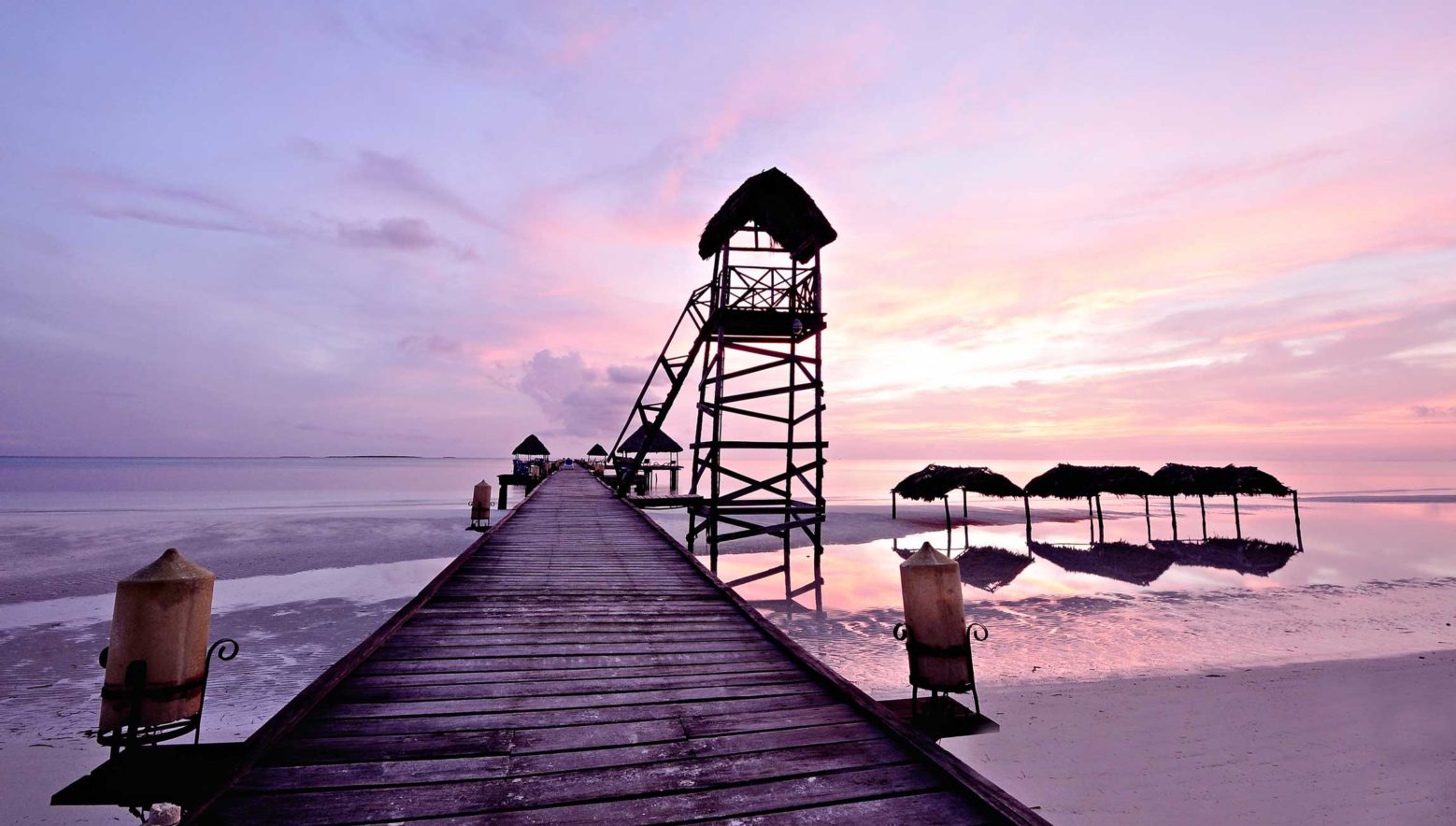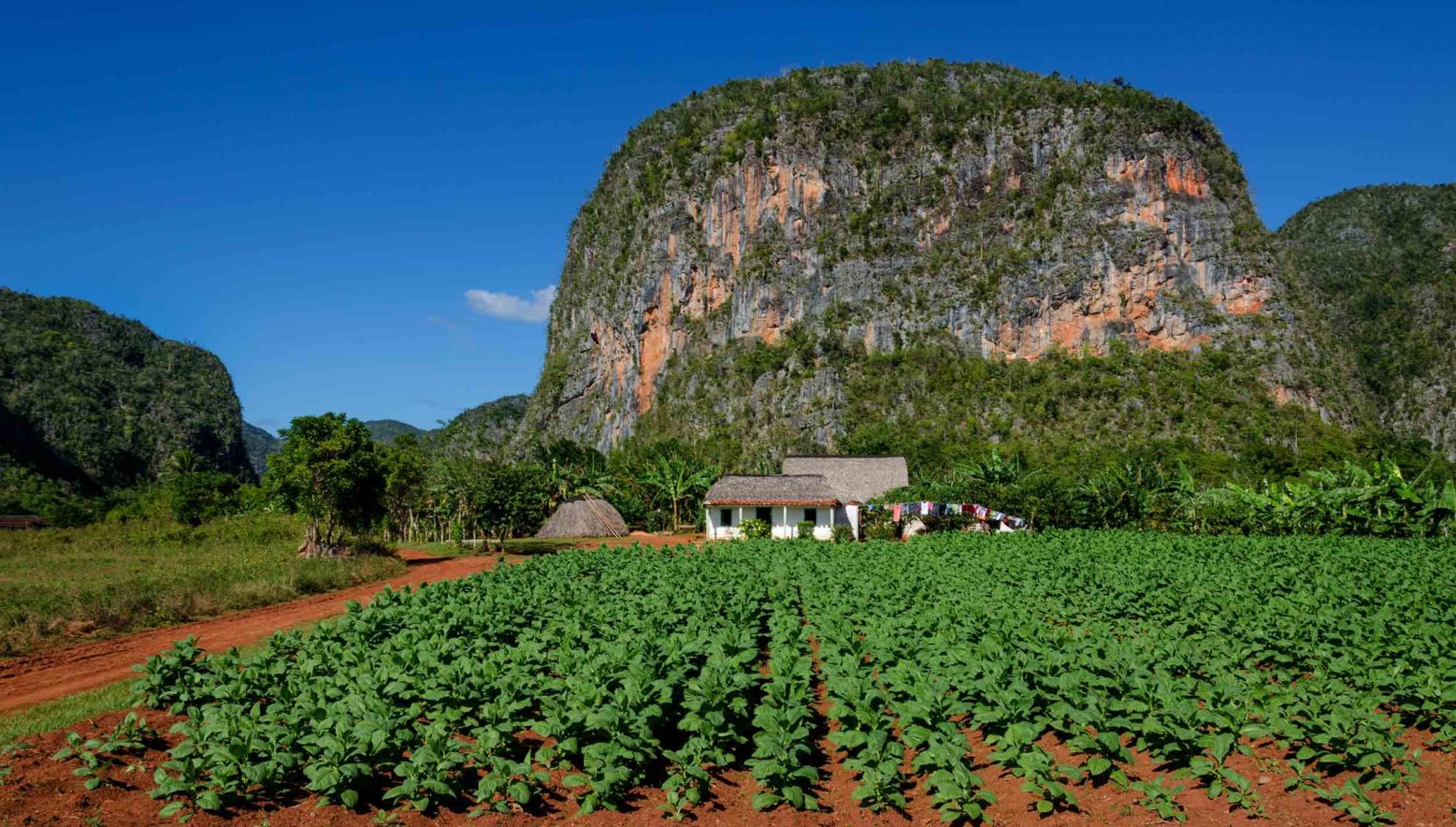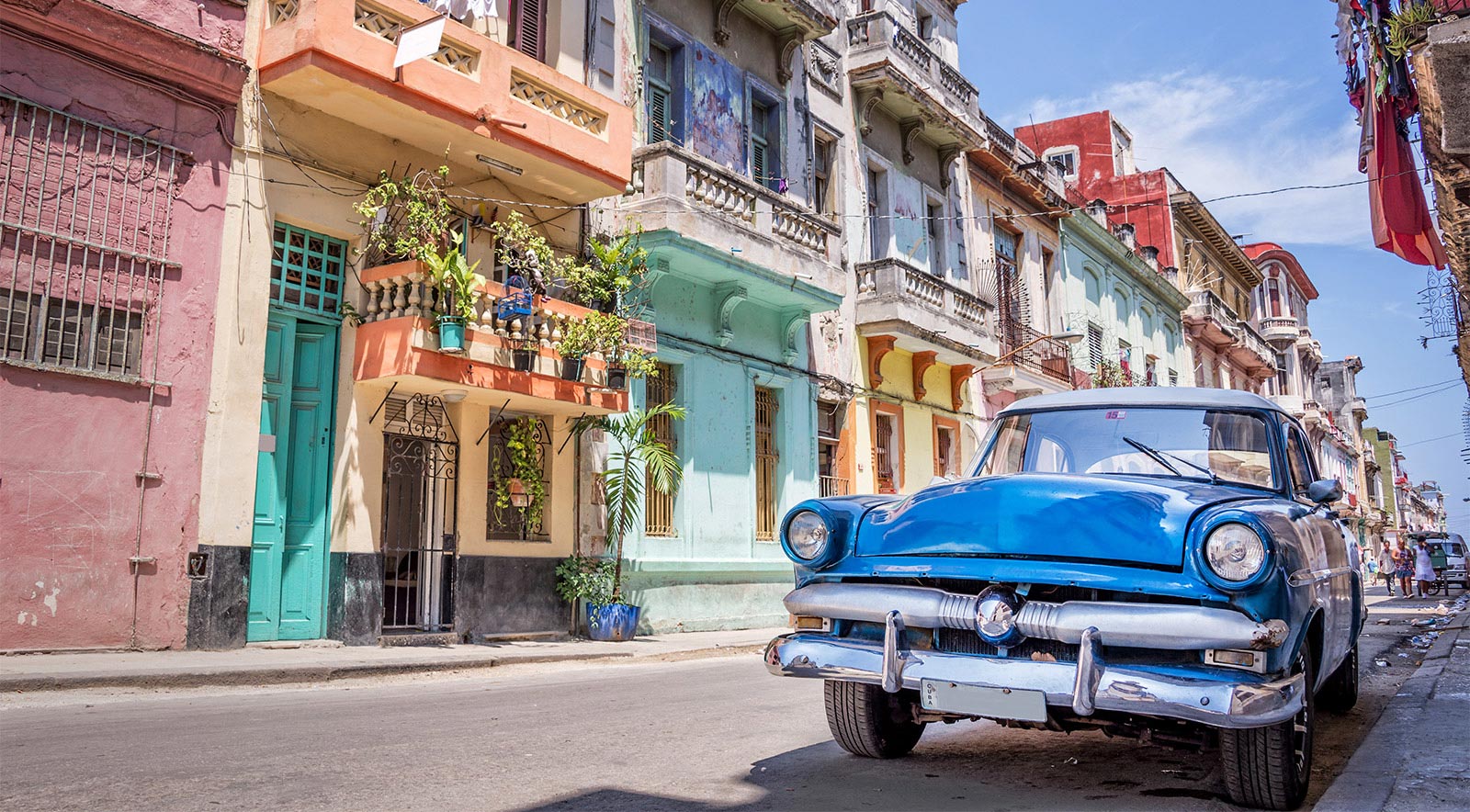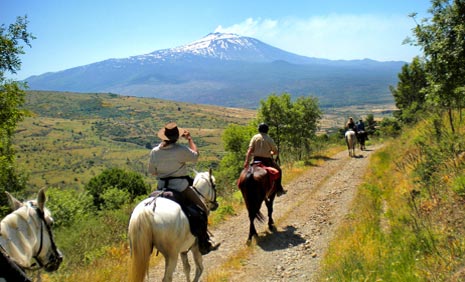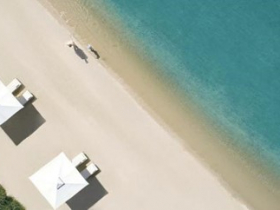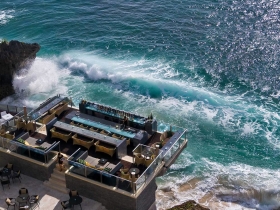We are not currently selling holidays to Cuba. For a mix of culture, Spanish colonial history and stunning Caribbean beaches why not try the Dominican Replublic instead?
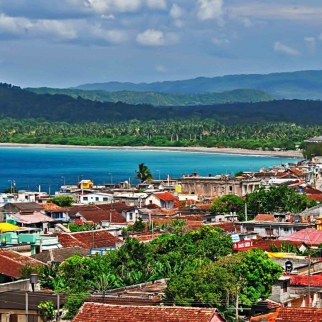
Baracoa
BaracoaCuba’s oldest town, pocket-sized Baracoa is rich with customs and legends passed down through the generations. Music lovers should head for Calle Antonio Maceo, packed with live-music venues with a street party every Saturday.
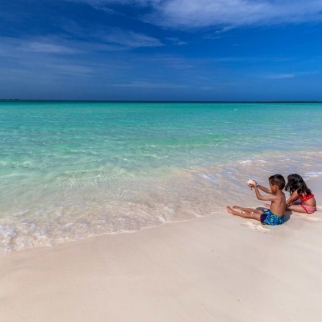
Caribbean Cayes & Coast
Caribbean Cayes & CoastCuba’s answer to the nearby Florida Keys is a collection of idyllic sandy islets off its northern coast, linked to the mainland by bridges. A quieter alternative to Varadero with equally good beaches, the islands abound with marine and bird life.
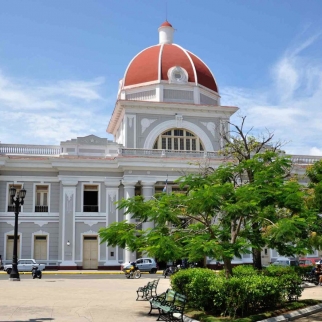
Cienfuegos
CienfuegosSitting on the edge of a spectacular natural bay, the wealth of neoclassical architecture in Cienfuegos reflects the city’s past life as a wealthy Spanish port. Nearby, Bay of Pigs has superb snorkelling and a museum dedicated to the failed US invasion.<
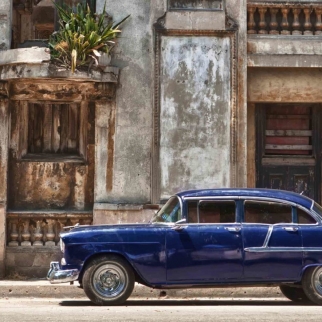
Havana
HavanaA city for romantics, take a stroll along the breezy Malecon and delve into the past at the Museo de Revolucion. The paint may be peeling but Havana is no faded beauty – this city is alive with art, salsa, mojitos, and an emerging foodie scene.
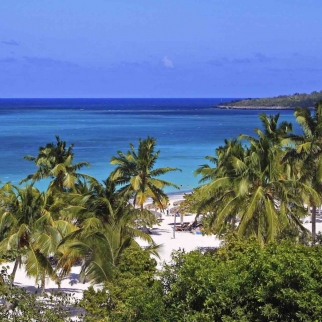
Holguin Province
Holguin ProvinceGuardalavaca’s blissful beaches with powder white sand and fish-filled reefs are the main draw to this rural province in the northeast. Nearby historic Baracoa and San Isadoro de Holguin are virtually tourist-free, offering a slower pace of life.
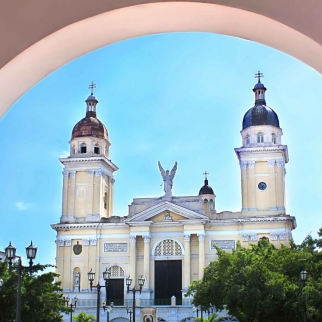
Santiago de Cuba
Santiago de CubaCuba’s second city holds a pivotal place in revolutionary lore and its Afro-Caribbean-influences give it a cosmopolitan energy. With a stunning setting between the Sierra Maestra and the sea, this busy city offers real insights into Cuba’s history.
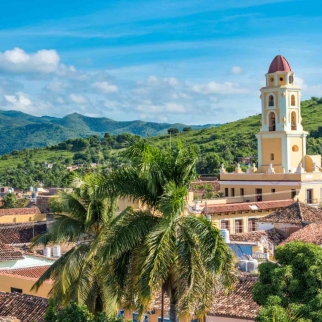
Trinidad & Escambray Mountains
Trinidad & Escambray MountainsCuba’s heritage jewel, the cobbled pastel-hued streets of colonial Trinidad are framed by the wooded Escambray Mountains. Studded with jade green lakes this low key region is perfect for history buffs and nature lovers alike.
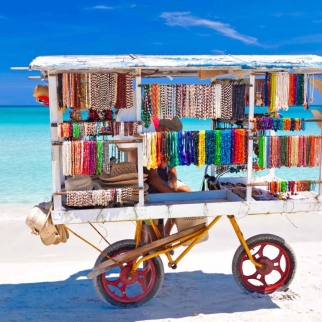
Varadero
VaraderoThe largest beach resort in the Caribbean, Varadero is unlike any other part of Cuba – here are over 50 sprawling resorts along a 20km stretch of golden beach. It lacks the true Cuban buzz but it’s great for some R&R during a longer exploration.
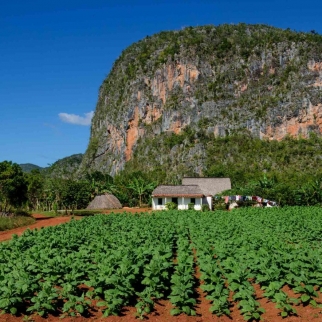
Western Cuba
Western CubaPinar del Rio province is rural Cuba at its finest, with the Vinales Valley on the World Heritage list for its unusual karst landscape and traditional tobacco farming. Dotted with caves and hidden streams, the Sierra de los Organos offers superb hiking.
Browse through our suggested itineraries for inspiration. These are just a starting point for your plans – remember that all our itineraries are tailor-made to your specifications.
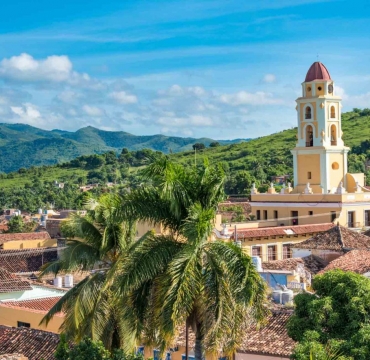
Experience Cuba
Spend a fortnight discovering Cuba's rich history and culture. Explore the historic heart of Havana and colonial Trinidad, and immerse yourself in the island's troubled past in Santiago and the Bay of Pigs. Tour artist's studios, tobacco and sugar plantations before experiencing the incredible biological diversity of Alejandro Humboldt National Park . Finally indulge in total luxury and relaxation with Royal Service at an all-inclusive 5 star beach resort in the Bahia de Naranjo Nature Park.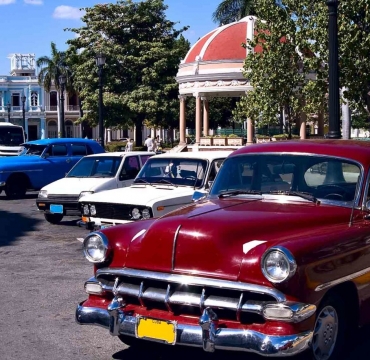
Essence of Cuba
Discover the essential highlights of Cuba on this 11 day tour. Explore the faded beauty of Old Havana and colonial Trinidad, tour the island’s lush countryside with its tobacco and sugar plantations, and immerse yourself in Cuba’s troubled past at the famous Bay of Pigs. Then relax and indulge in two days of unadulterated luxury on Cuba’s best beach.
Quick country facts
- Recommended airlines
Virgin Atlantic direct from London, Air Canada, Swiss, KLM and Air France indirect - Flight time
10 hours with a direct flight - Time zone
GMT -5 hours - Visa requirements
Cuban Tourist card necessary in advance of travel
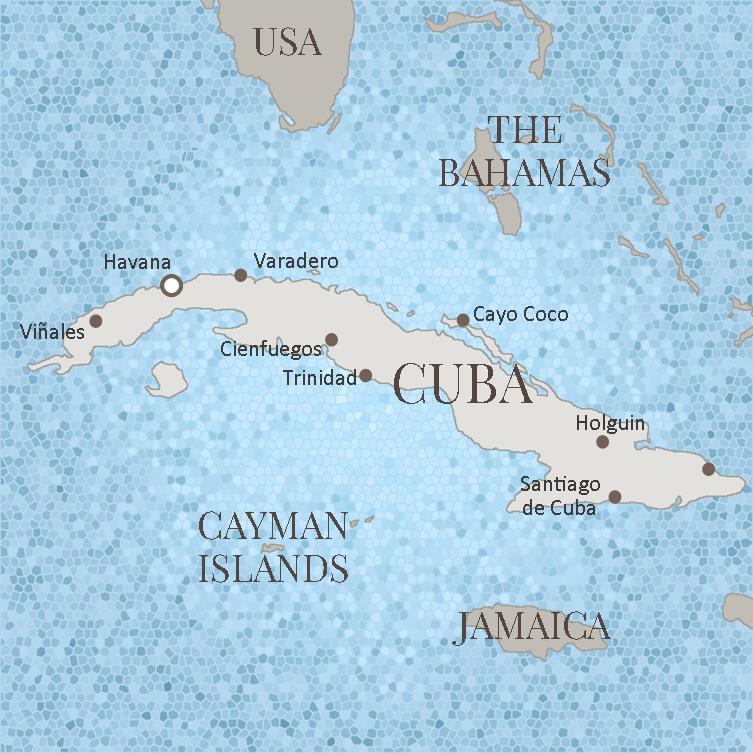
Useful Links
Entry Requirements & safety
UK Foreign Office Travel Advisory
Cuban Consulate in London
Health & immunisations
NHS Scotland Fit for Travel
General country information
BBC Country Profile
Lonely Planet
Weather
Weather2Travel
BBC Weather
Getting There
Cuba is an island so the only way to get there is by air or as a stop on a cruise ship. There are two major airports in Havana serving international carriers – most flights arrive into Havana but some charter operations arrive into the beach resort of Varadero. It’s not usually possible to combine the two.
Getting Around
Cuba is the largest Caribbean island and has a selection of regional airports connecting Havana to the likes of Santa Clara, Camagüey, Holguín and Santiago de Cuba, as well as the resorts of Varadero, Cayo Largo, Cayo Las Brujas and Cayo Coco. However, the state-owned planes are aging and have a poor safety record so we recommend travel overland if there’s time. For the intrepid there is a railway network covering the island, as well as a large selection of local coaches. For more comfort we would recommend private car transfers, or you can hire a car and self-drive, although this last option is only really suitable for those with a really good grasp of Spanish, plenty of time and a sense of adventure
Distances
Driving in Cuba can be enjoyable but many journeys take longer than expected if self-driving as road signs have largely been melted down for scrap. With a private driver on hand, expect journey times of around 5 hours from Havana to Cienfuegos, and 6 hours from Havana to Trinidad. Getting from end to end (for example driving to Santiago de Cuba in the east) will involve at least one overnight stay each way, making a multi-stop itinerary, but there are some great loops possible around the island for those who would like to see more of the country.
Accommodation
Accommodation varies from B&B accommodation in private homes (known as Casas Particulares) to large chain resort hotels. There is no true five star offering in the country and in fact in general this is a destination which is difficult to do in luxury due to shortages of basic items including building materials. But there is history in spades and what the hotels may lack in facilities many make up for in ambiance and charm. Start planning early though – Cuba is experiencing an influx of visitors and there is a chronic shortage of good quality accommodation, forcing prices up to around $500 per room per night for a small room at one of Havana’s top hotels and making finding any rooms at all hard at short notice. Staying in a few Casas Particulares alongside your hotel stays makes for a rewarding way to experience local culture and keep costs down at the same time.
Weather and When to go
Cuba, like all Caribbean islands, is best visited from December to May, as it has a tropical climate and experiences a rainy season from May to October. It’s worth noting however that winter can get a bit chillier than you might expect – it might not be warm enough to lie out at the beach in December or January, despite clear, blue skies overhead. You’ll need to plan 6-9 months in advance if you want to visit Cuba between December and February or over Easter.
Rains start off very intermittently and May and June can be fine, warm months to travel with only a day or so of rain per week. The heaviest rains don’t normally arrive until late July. September and October are right in the middle of the region’s hurricane season and offer humidity, regular, heavy rain and – worst-case-scenario – a tropical storm or hurricane.
Cuba is at its busiest from mid-December to mid-March, and Havana can be over-run with cruise-ship day-trippers at this time, with prices at their highest and availability very scarce. Moving away from Havana Cuba’s colonial gems Trinidad and Santiago are likely to be a bit quieter even in peak season due to the extra effort involved to reach them. July and August is also a busy time, despite the possibility of rain or hurricanes, as pressure on accommodation at peak times forces holiday makers to travel in what used to be the ‘off’ season’.
Spring (mid-March to mid-April) offers probably the best of all possible worlds – slightly lower prices, warm and sunny weather and fewer crowds.
- JAN
- FEB
- MAR
- APR
- MAY
- JUN
- JUL
- AUG
- SEP
- OCT
- NOV
- DEC
- Best
- Good
- OK
- NOT ADVISED
